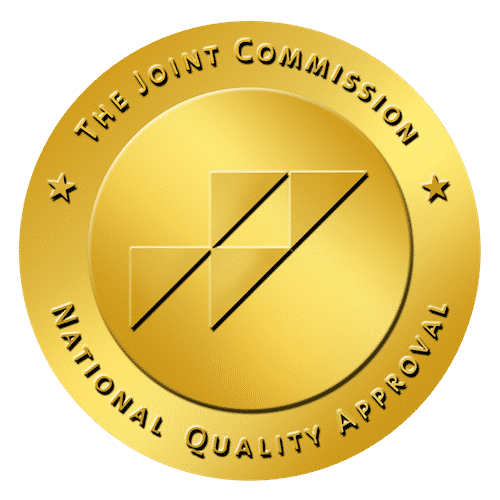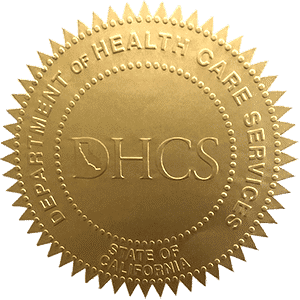A Safe Place To Start A New Journey.
"I have absolutely no pleasure
in the stimulants in which I sometimes so madly indulge.
It has not been in the pursuit of pleasure
that I have periled life and reputation and reason.
It has been the desperate attempt to escape
from torturing memories,
from a sense of insupportable loneliness
and a dread of some strange impending doom."- Edgar Allan Poe
Disclaimer: Only for fair use for educational purposes and illustration. We do not own the copyright to this video.
The robust debate about the link between social isolation and substance use disorders (SUD) has split addiction thought leaders into three camps – those who are vehemently opposed o the premise, those who fully agree, and those with a more nuanced view.
It is an inarguable fact that loneliness, social isolation, and lack of connectedness are a reality in the post-modern, technology- driven, industrialized, 21st century world. Across the globe, especially in urban areas, life is defined by ever shrinking or non-existent familial ties, sense of community, religious and other group affiliations, work arenas as primary social hubs, technology, social media, and virtual hubs as surrogates for physical connectedness, and living alone or in detached rooming arrangements with strangers.

Across the globe, the number of households occupied by solo dwellers has risen at a rapid rate. In the U.S., 35.7 million adults live alone, making up 28 percent of the nation’s households. the group consists of single, divorced, and widowed adults. While many report fulfilled, enriched lives, especially those who have left unhappy relationships or the primary caregiving of children, spouses, and parents; others confess shrinking circles of connectedness as a casualty of living alone. A recent study found that Americans have 3 lifelong friends, 5 good friends, 8 people they like but don’t usually date, 50 acquaintances, and 91 friends on social networks.
The study also found that 45% of adults say they find it difficult to make new friends. It also states that the average3 American has not made a new friend in five years. In fact, fo many it seems that popularity peaks at age 23, and 36% peaks even before age 21.
Addiction research has shown that substance abuse disorders are provoked by a number of factors including genetics, family history of addiction, adverse early childhood experiences, life circumstances, stress, mental disorders that co-occur with or create vulnerability to addictions, peer pressure, and environment. The inciting permutation of factors that make people susceptible to addiction varied from person to person.

Some people who suffer from mental disorders may never grapple with addiction, while others struggle with both- perpetuating a cycle of addiction, pain management, and mental illness.
However, within the whole range of causes of addiction, loneliness and social isolation are gaining attention as logical provocateurs of substance abuse disorders. This body of research is gaining currency and validity since recovery and relapse prevention is rooted firmly in the opposite-therapeutic individual and group encounters, solidarity and peer relationships, fellowship and acceptance in AA, connectedness, friendships, sharing, communication, share journeys of healing, and community.

"I was often lonely and alone and filled with hate. Nothing gratified me. There was always this mater of time happening, this question of how to spend it. On weekends, when my mother was not at work, she lay in bed in the dark, exhausted, in her fifties, raising a teen-age boy. In another room, I, too, lay in the dark. That was my impression of family life and of adulthood; I supposed that, in the future, instead of going to school, I would have some sort of job, and on the weekend I would sleep."
-Carlton Wooten
Other addiction memoirists have written about teenage risk-taking behaviors such as drug use and sexual promiscuity as initial antidotes for boredom, in the absence of parental attention and affection and healthy extracurricular activities to preoccupy them. Idle minds and hands are the devil’s playground and workshop, are sayings frequently cited by drug users as the reason for their early use.
"Everyone gets bored now and then, but it is the difference between changing that mood to healthy alternatives versus sitting around with friends 'passing the pipe' for a few high-flying hits. This kind of boredom can ultimately lead to an anti-social, destructive path toward addiction."
- Carole Bennett
Reclaim Your Life: You and the Alcohol/Addict
When we experience feelings of anxiety, loneliness, sadness, or despair, the reflexive urge to manage our negative feelings is to relieve the negative emotions. Some of us may choose healthy tools like exercise, others may choose to swipe credit cards to purchase items we can’t afford, others may engage in high risk and reckless behavior, and the rest may choose to self-medicate with drugs or alcohol.
Self-medication can numb our wretched feelings or erase them for a short time, but, left unchecked, will explode into a full addiction, with us needing increased doses to feel less numb or forget less.
Several pioneering rat studies have shown the relationship between substance use and peer relationship, most famously the seminal Rat Park experiment in the 1970s by Dr. Bruce Alexander. Prior experiments had already shown that caged rats in solitary confinement, when offered the choice between bottles holding water and heroin or cocaine, repeatedly chose the drug-infused bottles until they died of overdoses.
The cages were standard steel cages absent of stimuli.

"Although the rats lived in close proximity, they could neither see nor touch each other, because the sides of their cages were made of sheet metal. The only visual stimulation they got was seeing the people who brought food water and cleaned the metal pans under their cages every few days. Unlike human prisoners, the rats did not even get an exercise period outside their cramped cages."
Dr. Bruce Alexander
Dr. Alexander hypothesized that giving rats an additional choice of an enriched environment and companionship would yield different results. Instead of steel cages, he built a rat park– a veritable paradise for rats. His study found that while the rats in solitary cages chose drug laced fluids over water, the socialized rats in rat park preferred plain water.
"Even when they did imbibe from the drug-filled bottle, they did so intermittently, not obsessively, and never overdosed."
Dr. Bruce Alexander
Further studies on both rats and humans have found a link between isolation and substance use, as well as between connectedness, peer pressure, and recreational drug use.
"I'm lonely. And I'm lonely in some horribly deep way and for a flash of an instant, I can see just how lonely, and how deep this feeling runs. And it scares the shit out of me to be this lonely because it seems catastrophic."
-Augusten Burroughs
Memoirist of Addiction & Sobriety
A 2018 rat study by National Institute of Drug Abuse led by Dr. Marco Venniro reiterated the role of social interactions on drug use and drug-associated cues to brain responses. In the study rates were given two choices: press a lever for a drug infusion of heroin and methamphetamine; or press a different lever to open a door and interact with another rat. More than 90 percent of the time, rats chose to forgo the drugs and open the door to engage with their peer.
In many cases, the rats that had pressed the lever for drugs for many days and exhibited behaviors that corresponded with human addictive behaviors still elected to engage with their peer.
"The study concluded that social reward has remarkable protective and restorative effects in rodent addiction models and illustrate the importance of considering social factors in neuropharmacological studies of drug addiction."
-Dr. Bruce Alexander
While human responses are more complicated than rodent responses, these studies hold clues on how social rewards and social-based behavioral therapeutic modalities and social support and community reinforcement programs might be used in human addiction treatment prevention.
Psychiatrist and public health doctor, Dr. Lloyd Sederer, author of The Addiction Solution: Treating Our Dependence on Opioids and Other Drugs writes:
"The biggest problem with the powerful, ubiquitous psychoactive drugs (meaning those that work on our brains and minds), is that they are so effective. In immediate and powerful ways, they change how we feel, think, relate, and behave. Or transport us away from loneliness and isolation. That is why we use them."
The reverse has also been found in the link between social connections and substance abuse-friends, families, peers, and social groups can influence drug and alcohol use and abuse, sobriety, and relapse. In a 2017 study, researchers found that recreational drug use take place in complex social settings with extensive codes and practices and that,
"enhanced social connectedness seems to contribute to the attractiveness and acts as a potent force underpinning recreational drug use."
Loneliness can easily hook use into a downward spiral of self-hatred and despair and a strong desire to numb the negative feelings or to forget them-with alcohol or drugs or risky behavior. When you begin to feel extended loneliness, try to jolt the body and mind out of the downward spiral.
Try walking in nature, or running, or other exercise.
Call someone to talk. Texting and social media doesn't count.
Invite someone to do something fun you've wanted to do. Window shop, visit a museum, go to a poetry reading, make art, etc.
Fin a cause you love and volunteer.
Instead of watching sports, play sports. Instead of lurking on social media, join in.
Find like-minded people who can relate to your problems.
Find a class, whether it's to learn a language, a musical instrument, or a creative art, you'll meet people.
Create a tribe within your community.
If you've always wanted to learn to paint watercolors or do animation, pursue it.
Discovering a new place or feeling a new experience can make you feel excited and hopeful.
If you need to talk someone, there are many phone and chat helpline that offer emotional listening and support to those suffering from loneliness, isolation, and depression.
The Samaritans Helpline – 1-877-870-4673 is available 24 hours a day, 7 days a week by phone and text. They also offer online chats for those who prefer to use digital tools. They provide compassionate support to anyone who is feeling anxious, feeling isolated, depressed, or suicidal. It’s confidential and free to use.
The links between loneliness, isolation, connection, and addiction seem to be both basic and obvious and groundbreaking and radical.
"Humans, not just rats, need to be part of a community, encouraged to relate and experience the support of others. This is about as basic a psychological truth as exists,"
-Dr. Sederer
At New Leaf Detox and Treatment, we view every client as an individual with a life story and a meta-narrative. In our clinical encounters with clients, we lean into their stories and narratives, about who they were before they fell down the rabbit hole of addiction, about their families, their communities, their social supports. We work with them to uncover what and who gives their lives meaning, and we journey with them as they work to turn over a new leaf.
"So the opposite of addiction is not sobriety. It is human connection"
-Johan Hari
Boyle, M. (2018). Why Addicts Are Often Lonely People. Psych Central. Retrieved on August 12, 2020, from https://psychcentral.com/blog/why-addicts-are-often-lonely-people/
https://ourworldindata.org/grapher/percentage-of-americans-living-alone-by-age
Amary Mey, David Plummer, Shailendra Anoopkumar-Dukie & Amber Domberelli (2018) What’s the attraction? Social connectedness as a driver of recreational drug use, Journal of Substance Use, 23:3, 327-334, DOI: 10.1080/14659891.2017.1409816
The Role of Perceived Loneliness in Youth Addictive Behaviors: Cross-National Survey Study://mental.jmir.org/2020/1/e14035/?utm_source=TrendMD&utm_medium=cpc&utm_campaign=JMIR_TrendMD_0


